Wonjo 1ho Jangchungdong Halmeonijip(원조1호장충동할머니집)
2.1Km 2020-11-17
174, Jangchungdan-ro, Jung-gu, Seoul
+82-2-2279-9979, +82-2-2275-1064
Following his mother’s footsteps, the son of the previous owner is now managing the family business. Opened during the early years of Jokbal Street, the delicious meat at this restaurant is fondly remembered by customers. While the meat itself has almost no fat, the fat portion is extremely soft and savory. This restaurant is also different from the others in that it provides kongnamul-guk (bean sprout soup) with the jokbal (steamed pork hock). Pyeongyang-style naengmyeon (cold noodles) and tteok-mandu-guk (rice cake-dumpling soup) are also delicious. Pyeongyang naengmyeon is cooked to suit South Korean tastebuds. Besides, the noodles and dumplings are hand-made. Despite the restaurants long history, the building of the restaurant is clean and well-maintained as it was being rebuilt after a fire in the 1980s. There are plenty of tables on the first and second floors to accommodate customers, and the third floor is reserved for large groups. Especially noticeable is the clean appearance both inside and out, despite the restaurant’s long history; probably because the building was rebuilt after a fire in the 1980s. Plenty of tables on the first and second floors accommodate customers, and the third floor is reserved for large groups.
Palais Changgyeonggung (창경궁)
2.1Km 2024-01-11
185, Changgyeonggung-ro, Jongno-gu, Seoul-si
+82-2-762-4868
Situé au centre de Séoul, le palais Changgyeonggung a été construit en tant que palais Suganggung par le 4ème roi de la dynastie Joseon, le roi Sejong (r.1418-1450), en faveur de son père retiré du pouvoir, le roi Taejong. Le palais a souvent servi de lieu de résidence pour les reines et les concubines. Durant le règne du roi Seongjong (1469-1494), le palais fut rénové et renommé en palais Changgyeonggung. Le palais a ensuite accueilli un zoo et un parc botanique durant la période de l'impérialisme japonais. Le site est resté tel quel jusqu'en 1983 avant que des travaux de rénovation furent entrepris pour restaurer l'aspect noble et originel du palais.
Hwangsaengga Kalguksu (황생가칼국수)
2.1Km 2020-08-04
78, Bukchon-ro 5-gil, Jongno-gu, Seoul
+82-2-739-6334
Hwangsaengga Kalguksu, one of the most popular restaurants on Samcheongdong-gil, offers authentic homemade kalguksu, wang mandu (extra-large dumpling) and kongguksu (noodles in cold soybean broth).
The Shilla Seoul (신라호텔(서울))
2.1Km 2021-05-31
249, Dongho-ro, Jung-gu, Seoul
+82-2-2230-3311
The Shilla Seoul is a luxury hotel with an outdoor sculpture garden and Guerlain Spa. Other facilities include a fitness center, sauna, swimming pool, business center, restaurants, and more. The hotel also offers guests a free shuttle bus to Myeongdong and Dongdaemun shopping centers.
Pyeongando Jokbal (평안도족발집)
2.1Km 2021-03-30
174-6, Jangchungdan-ro, Jung-gu, Seoul
+82-2-2279-9759
Pyeongando Jokbal has a history of over 50 years, and is very popular among all the jokbal (pig's trotter) restaurants in the Jangchung-dong Jokbal Street area. The taste is outstanding, making this hard-to-find restauant a favorite among jokbal lovers.
The Place Seoul (traditional Korean-style guesthouse) [Korea Quality] / 멀티스페이스 곳 [한국관광 품질인증]
2.1Km 2019-12-05
52-11, Gyedong-gil, Jongno-gu, Seoul
+82-10-3255-1289
“The Place Seoul” is located in a small alley in Gyedong-gil, Jongno-gu, Seoul. It is a guesthouse made by remodeling an 80-year-old traditional Korean house. The ondol room furnished with traditional beddings is popular not only among foreigners but also among Koreans due to its special ambience. The ceiling of the room dates back to 80 years ago. The rafter put on the roof at the time of construction of the house shows the antiqueness of the house. The toenmaru (a narrow wooden porch running along the outside of a room) that comes alive with the frequent coming and going of people adds to the ambience of the traditional Korean house, with the Sansuyu (corni) tree and vegetable garden beside the Korean-style house creating a leisurely atmosphere.
Beyond being a mere place to sleep in, “The Place Seoul” aims to be a composite cultural space whose motto is “the place to fill.” A simple wedding or a small-scale performance is held in the garden during the day. The rooms can be rented for small meetings.
“The Place Seoul” sponsors “WWOOF KOREA,” an NGO promoting environment-friendly agriculture as well as the right dietary life, “Slow Food Korea,” and “Slow Box.” As such, the place serves a special healthy breakfast consisting of homemade bread, handmade yogurt, and organic fruits and vegetables. In addition, the toilet paper, detergent, shampoo, etc. provided are all environment-friendly products.
“The Place Seoul” is located on Gyedong-gil Road, a famous tourist attraction in Seoul. It offers easy access to Bukchon Hanok Village, which is on the other side of the Gyedong-gil alley, as well as other major tourist attractions within walking distance including Changdeokgung Palace, Gyeongbokgung Palace, Samcheong-dong, and Insa-dong. The convenient location of “The Place Seoul” makes it easy to tour downtown Seoul.
Ahwon Gongbang (아원공방)
2.1Km 2014-08-25
16, Bukchon-ro 5ga-gil, Jongno-gu, Seoul-si
+82-2-734-3482
Ahwon Gongbang est un studio dévoué à l’artisanat en métal. Il offre de nombreux articles artisanaux faits mains tels que des chandeliers, des miroirs, et des accessoires en argent. Géré par les mêmes soeurs, il allie l’art moderne et la beauté antique à Samcheong-dong. Sophistiqués, les articles orientaux faits par les artistes ont attiré de nombreux touristes internationaux et plus particulièrement des visiteurs japonais. C’est l’endroit idéal pour faire du shopping ou simplement pour profiter de l’art artisanal.
AL MATTO (알마또)
2.1Km 2021-03-30
41-1, Sinheung-ro, Yongsan-gu, Seoul
+82-2-794-4616
It is a place that sells Italian-style oven pizzas. This Western dishes restaurant is located in Yongsan-gu, Seoul. The representative menu is wood-fired pizza.
Mont Inwangsan (인왕산)
2.1Km 2020-08-19
29, Inwangsan-ro 1-gil, Jongno-gu, Seoul
+82-2-2148-2834
Le mont Inwangsan abrite toujours les terrains rituels du roi Taejo et Muhakdaesa, ainsi que les remparts construits dans la périphérie de Séoul, qui s’étendent du tunnel de Sajik jusqu’à la porte de Jahamun. De nombreuses personnes aiment faire de la randonnée sur le sentier qui démarre du tunnel de Sajik et conduit au sommet de la montagne, puis longe les remparts pour aboutir à Buamdong. Le parcours de randonnée est également relié à la route qui se trouve devant Cheongwadae, ce qui permet aux randonneurs de visiter des monuments historiques comme les routes de Palpan et de Hyoja, ainsi que le palais de Gyeongbok. Le sentier de randonnée situé derrière le parc de Sajik conduit à Hwanghakjeong, où les archers de la dynastie Joseon faisaient montre de leur adresse au tir. Hwanghakjeong se trouvait à l’origine dans le palais de Gyeongbok, mais il a été déplacé dans la montagne. Le sommet offre une vue panoramique des environs, avec au centre le palais de Gyeongbok, et s’étend aussi loins que les montagnes Nak, Nam et Baegaksan.
L’itinéraire de randonnée qui longe les remparts est apprécié pour la beauté des paysages que les promeneurs peuvent admirer tout en escaladant la montagne. En suivant le passage qui se trouve à l’intérieur des remparts, on peut apercevoir une volée de marches de pierre après avoir dépassé Changuimun. En montant ces marches, le passage fait un coude vers l’extérieur des remparts. Il continue pendant 200 m et conduit vers un amoncellement de rochers autrefois utilisé pour bâtir des châteaux pendant le règnes des rois Taejo, Sejong et Sukjong. L’épaisse mousse sombre qui recouvre ces pierres témoigne de la longue histoire de Séoul. Le passage mène également au château de Tangchundae. Celui-ci a été construit pour renforcer les defenses de la ville après l’invasion japonaise de 1592 et la guerre contre les Mandchous en 1636.
Le mont Inwangsan culmine à une hauteur de 338,2 m et couvre les quartiers de Honghedong dans l’arrondissement de Seodaemungu ainsi que Muakdong, Nusangdong, Ogindong et Buamdong qui se trouvent à Jongnogu. Des formations rocheuses uniques et colossales, ainsi que la vue sur Séoul et Cheongwadae représentent quelques-uns des nombreux charmes du mont Inwangsan.
Hanboknam (한복남)
2.1Km 2021-01-19
17, Bukchon-ro 5ga-gil, Jongno-gu, Seoul
+82-10-6485-8507
Hanboknam, terme signifiant littéralement 'un homme vêtu du hanbok', est un centre sélectionné par le Ministière de la Culture comme entreprise créative (2015) qui s'est installé à Séoul en 2016 (auparavant à Jeonju). Ce centre propose des services de prêt ainsi que des expositions autour du hanbok, le vêtement traditionnel coréen.
On trouve de nombreux types de hanbok disponibles dans ce centre répondant à différentes thématiques. Les employés du centre peuvent vous fournir de l'aide pour choisir les accessoires du hanbok. Les services de prêt sont répartis selon différents espaces horaires (1h, 2h etc).
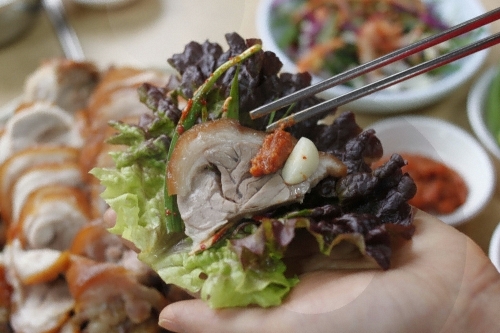
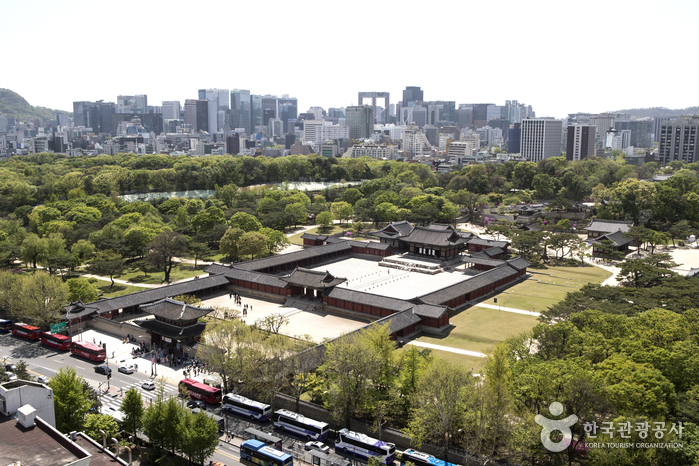
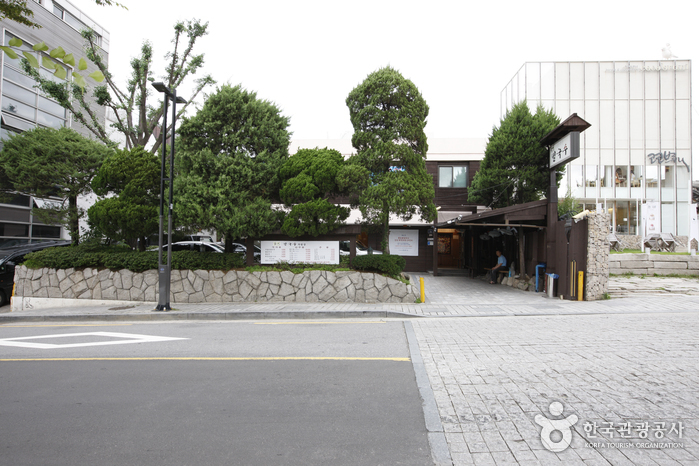
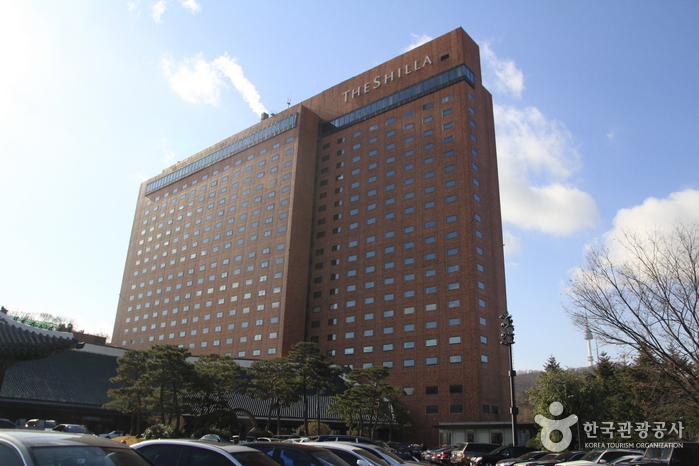
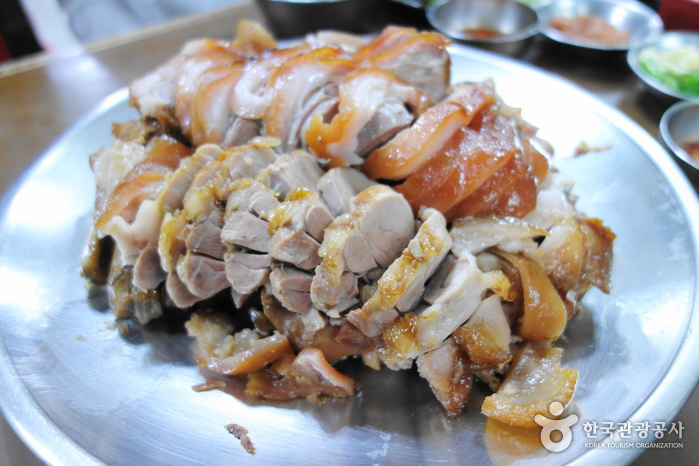
![The Place Seoul (traditional Korean-style guesthouse) [Korea Quality] / 멀티스페이스 곳 [한국관광 품질인증]](http://tong.visitkorea.or.kr/cms/resource/68/2631068_image2_1.jpg)
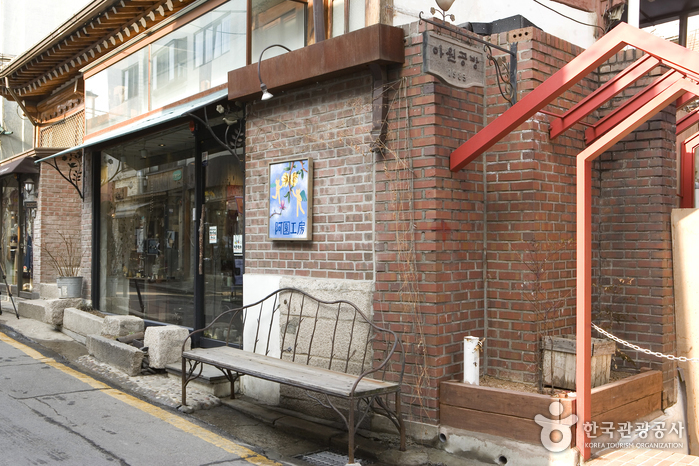
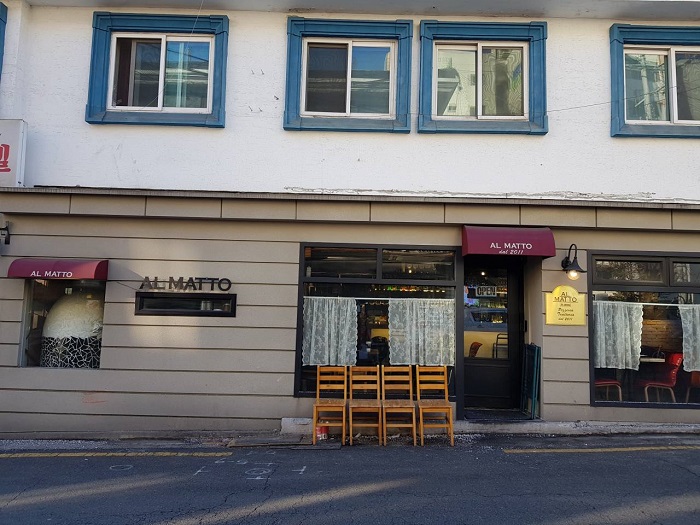
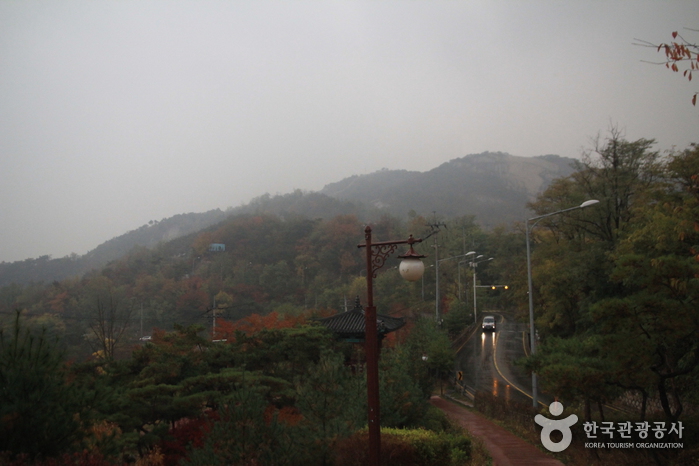
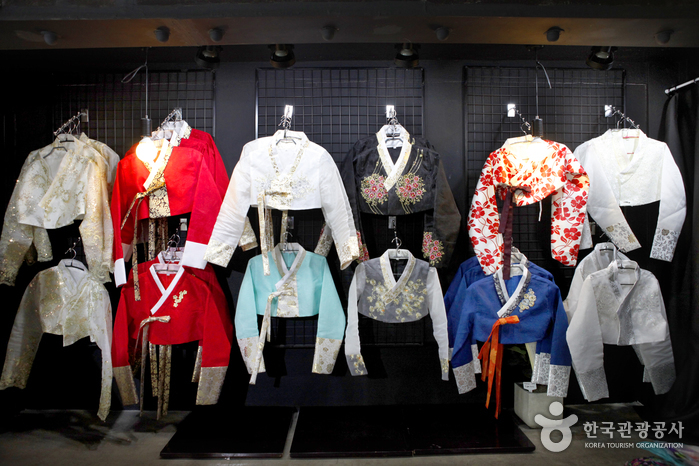
 Français
Français
 한국어
한국어 English
English 日本語
日本語 中文(简体)
中文(简体) Deutsch
Deutsch Español
Español Русский
Русский